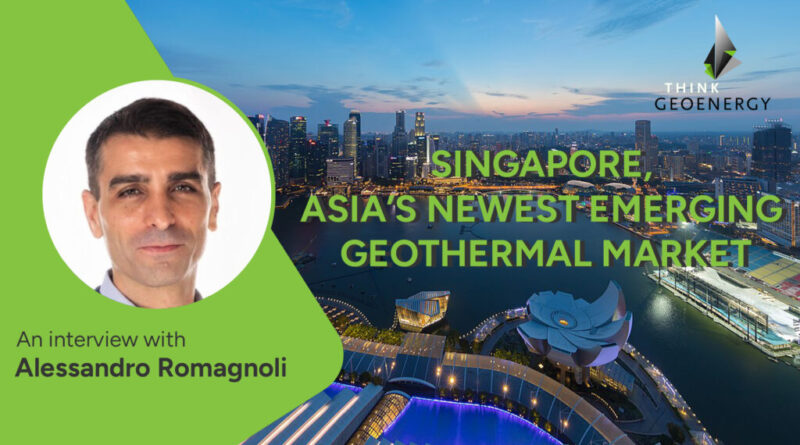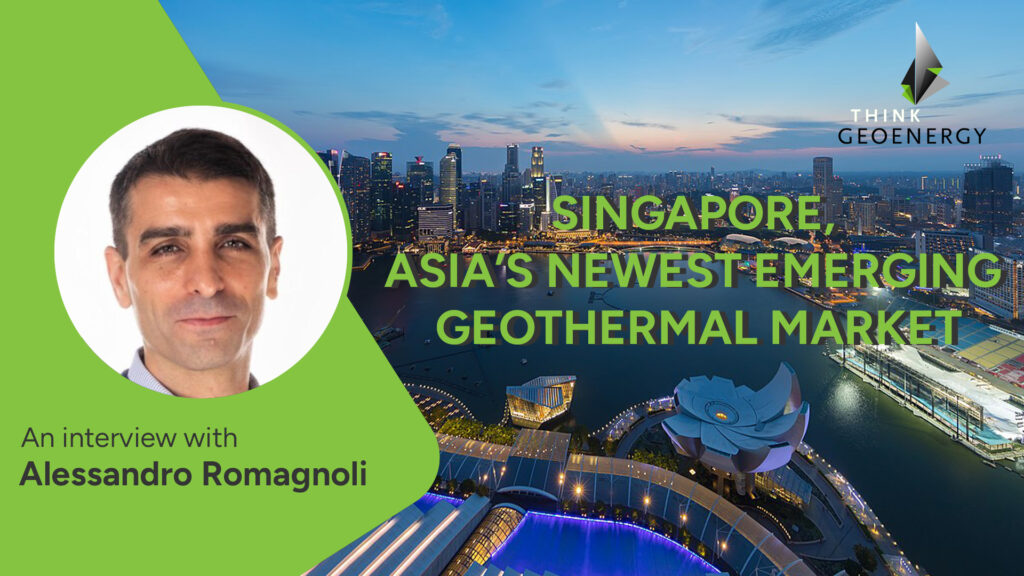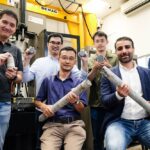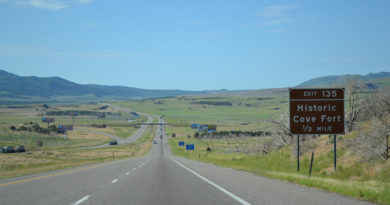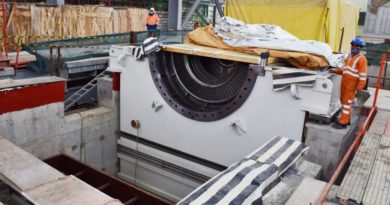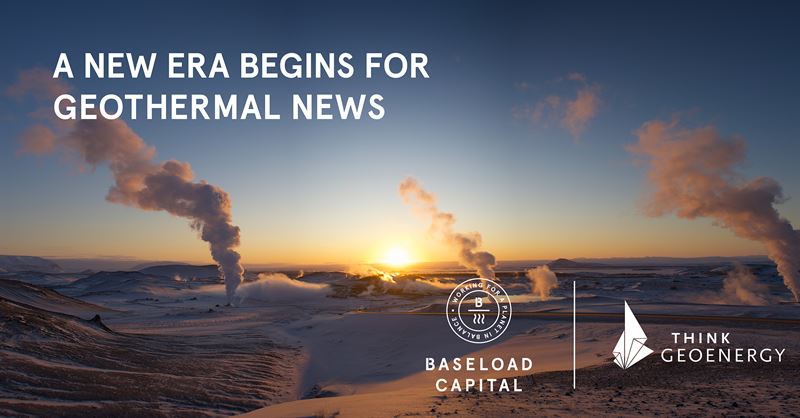Interview – Singapore, Asia’s newest emerging geothermal market
Energy Disrupter
In this interview with Prof. Alessandro Romagnoli, we discuss Singapore’s geothermal potential, the work that has been done, and challenges to be addressed.
Many people are already familiar with Indonesia, the Philippines, Japan, and China as some of the leaders of geothermal development in Asia. Taiwan and South Korea area also steadily building up their geothermal markets, and we are beginning to see encouraging progress in India.
Until recently, Singapore has not been in the list of Asian countries that are aggressively pursuing geothermal projects. This has seemingly changed recently with earnest efforts for geothermal development as part of a study on geothermal potential in Singapore under the Nanyang Technological University (NTU).
To learn more about this intriguing geothermal project, we talked to Prof. Alessandro Romagnoli from the School of Mechanical & Aerospace Engineering at NTU and lead of the study.
Can you tell us about the history of geothermal exploration in Singapore and the efforts that are being undertaken now?
Multiple investigations were conducted at the Sembawang hot spring between 1963 and the early 2000s, including activities such as shallow well drilling, pumping, and water chemical analysis (Zhao, Chen, and Cai, 2002). At the end of this period, the first conceptual model for the groundwater system with outflow at the Sembawang hot spring was proposed.
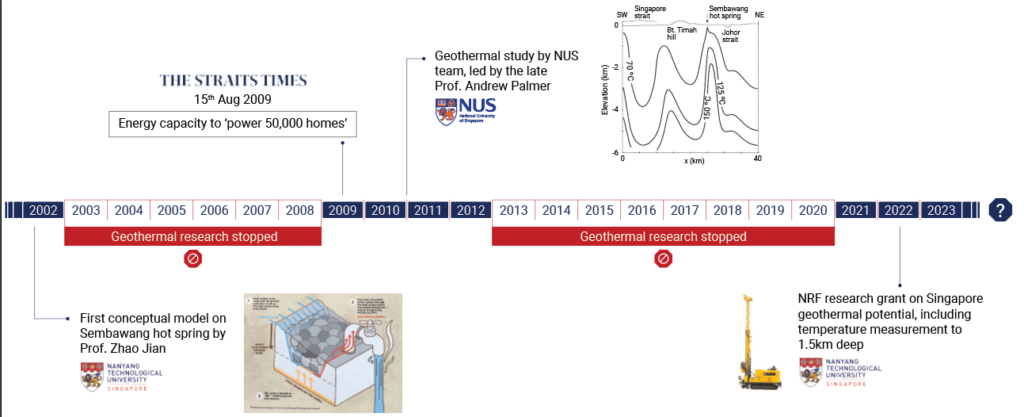
Subsequently, there was a six-year pause in the study before researchers at the National University of Singapore (NUS) expanded the groundwater concept in 2009-2012, simulating the first computer model for the Singapore geothermal reservoir (Oliver et al., 2011).
After this desktop study, the next phase was to progress with further field study. Several research programmes were proposed, initially by the NUS team and later by a team from Nanyang Technological University (NTU), but none received funding during this prolonged geothermal research hiatus period.
Finally, in 2021, funding was secured for our study involving the drilling of the deepest well in Singapore granite, which has yielded promising findings. In September 2023, the Energy Market Authority (EMA) called for proposals for a nationwide non-invasive survey in Singapore, signaling increased interest in geothermal exploration.
You recently reported on the results of a research well drilled to about 1 kilometer. What can you say about the results from drilling and testing of this well? Are the results just as expected?
The latest update on our study is indeed promising. As in our press release from July 2023, our findings indicate a positive outlook for geothermal potential in Singapore, particularly at our study area in the northern part of Singapore. Our temperature measurements and extrapolations suggest rocks at depth 4 – 5 km could be hot enough for power generation and various heat utilisation applications. The geothermal gradient, granite heat production and the heat flow are measured to be higher than the global average (for non-volcanic regions).
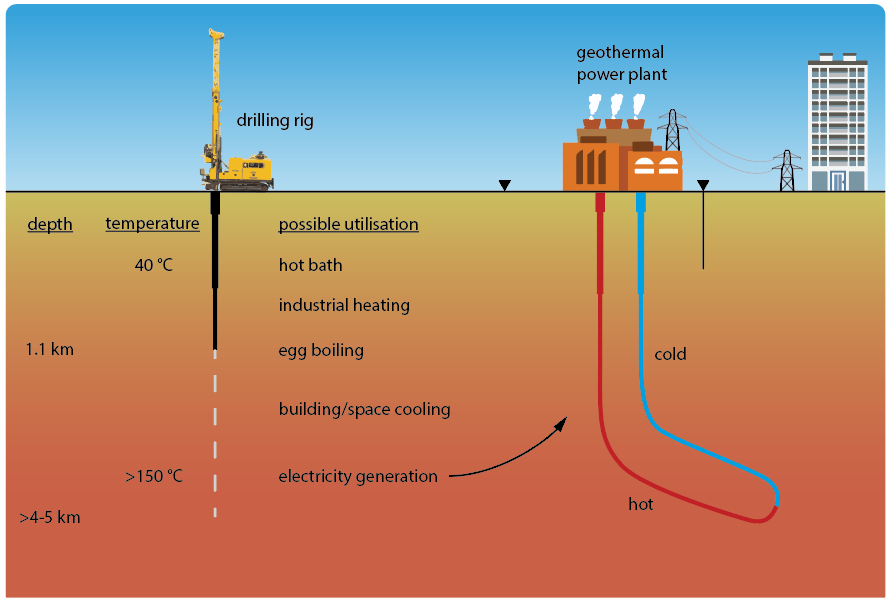
The geometrical extent of the potential hot rock remains unknown. However, if the temperature and the rock characteristics observed from our 1 – 1.5 km deep wells remain consistent to depths of 4 – 5 km, this would increase our confidence in the existence of hot rock resources within the Simpang granite region. If this potential is realized, it could represent a substantial renewable energy source capable of supplying a significant portion of Singapore’s energy needs.
Aside from the current study site, are there any other sites in Singapore that are of interest?
Other locations with geothermal potential include the eastern and western sides of Singapore. The eastern side of Singapore features a thin sedimentary layer over a potentially hot granitic basement, while the western side is characterised by thick sedimentary layers that can act as a heat trap from deeper sources. Our near-surface temperature distribution map indicates elevated temperature zones in the western part of Singapore. However, confirming the existence of this thermal resource will require further exploration efforts.
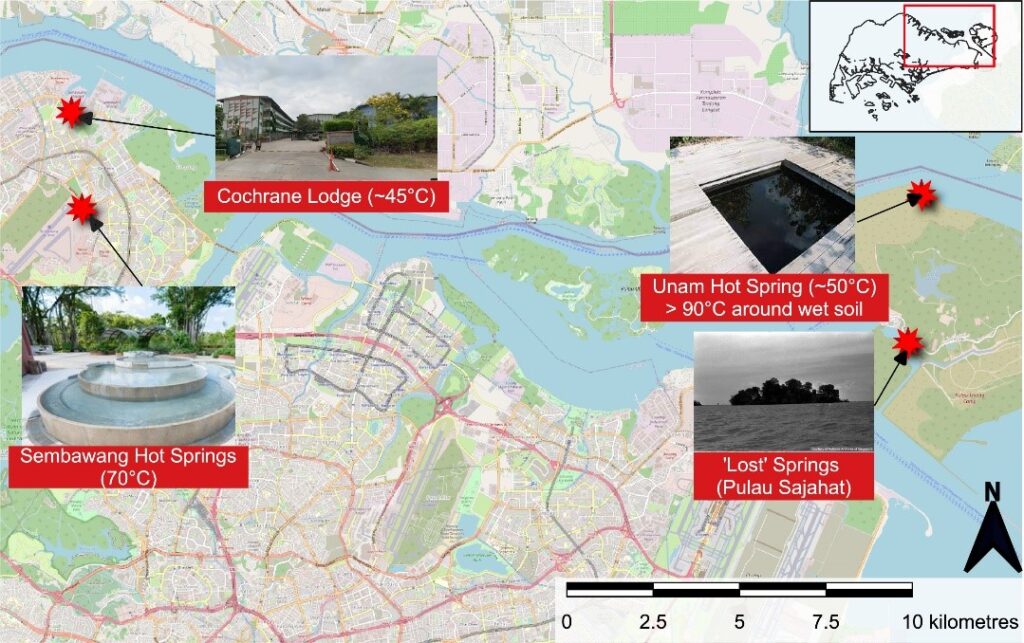
Furthermore, Pulau Tekong (an offshore island in the northeast) remains of interest as there is a region in Unum that features a boarded area containing hot water. In a study by Lim et al. in 2019, the surface temperatures of the water within the hot springs were measured to be around 50°C. However, they noticed that there was wet soil with faint traces of steam around the boarded area. The team inserted thermometers into the wet soil, finding that the temperatures exceeded 90°C.
What scale of development do you envision for geothermal in Singapore? Are you aiming for power generation, cooling, or any type of direct use application?
At the present we are exploring different options for geothermal heat utilization, which include power generation, cooling, water desalination, and other scenarios including, for instance hydrogen production. We are firming up some techno-environmental analyses to identify the best available options for Singapore.
Are there any specific challenges of conducting geothermal investigations in a highly urban area like Singapore?
Being highly populated, the deployment of a geothermal facility in Singapore will require careful consideration about location, operation, safety and reliability. It is worth noting that the bulk of the infrastructure in geothermal projects is underground, hence with adequate engineering design and construction, we do not envisage any major shortcoming from having geothermal facilities deployed in Singapore.
Geothermal is likely an unfamiliar concept in Singapore. How has the reception been socially? How supportive has the government been of this project?
Geothermal development in Singapore is often linked to the popular lifestyle of locals, particularly senior citizens, centred around the Sembawang hot spring. Geothermal energy development is often associated to the usage of the hot spring and, therefore, a potential removal of an element of their lifestyle. As far as we know, there is no geothermal development plan that may impact the Sembawang hot spring, and so there is no threat to the beloved lifestyle of the residents.
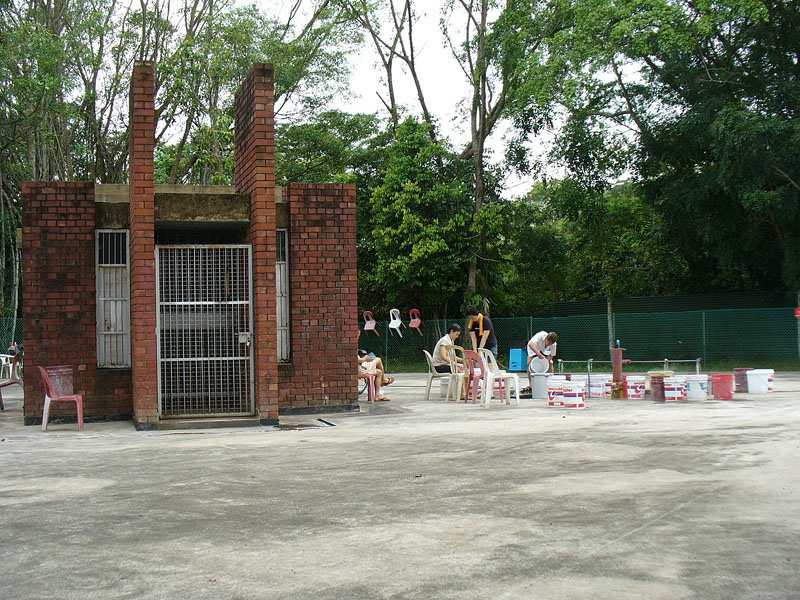
The government has been supportive especially in the granting of approvals to conduct the deep exploratory drillings, and the extension on the usage of land while we overcome technical challenges. We note that these established relationships with the various agencies are paramount for further development work. There have been notable individuals within these government agencies that have been championing the geothermal idea for years.
With the favourable findings from our current study, we hope that the government remains receptive and committed to understanding and developing Singapore’s subsurface and its resources.
What other kind of support is needed to advance geothermal in Singapore? This may be in terms of technology, technical expertise, policy support, funding, communications.
Data on the deep subsurface of Singapore is sparse and limited to the depths of the first few hundred metres. The EMA’s nationwide geophysical survey is the first step in the right direction to address this information gap. The collected datasets may prove valuable in managing project risks, such as in identifying sites for deep drilling and in well design. Moreover, survey results can play a vital role in shaping Singapore’s future endeavours, including policy-making and national infrastructure development planning.
One way to access heat energy from deep hot dry rocks involves drilling and fracturing of rocks at significant depths. This method remains challenging and expensive to this day, especially in highly urbanised areas like Singapore. An alternative heat extraction method is Advanced Geothermal System (AGS), which does not require rock fracturing, but requires extensive drilling. While AGS remains an emerging technology, small scale projects have been successfully demonstrated by commercial entities. Large-scale projects are currently underway, with plans to supply the grid as early as summer 2026.
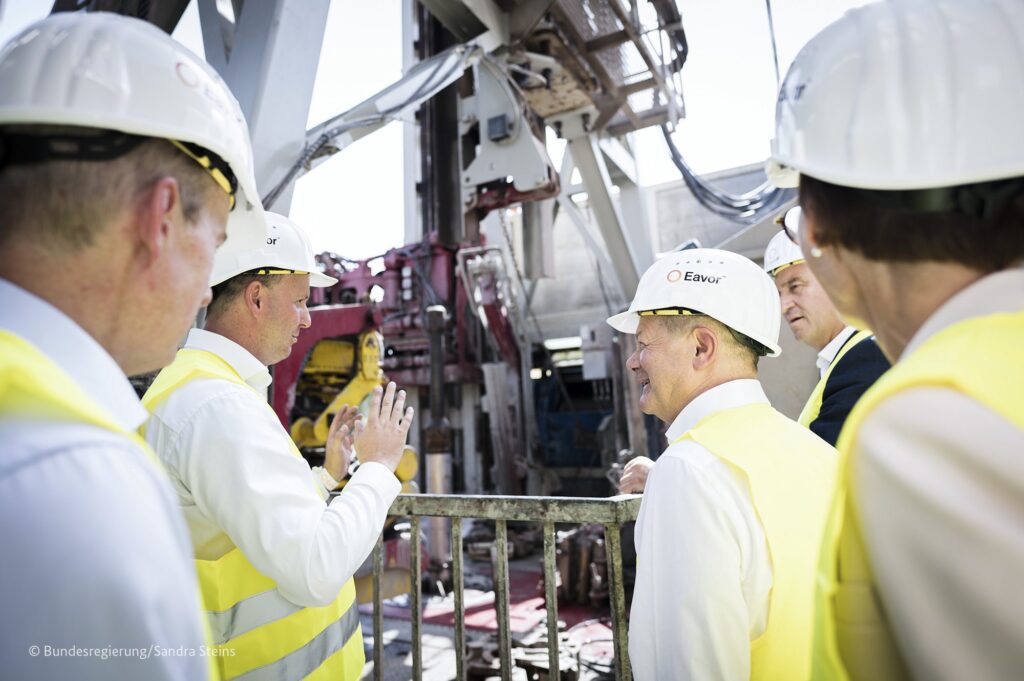
In Singapore, one avenue for progress is to explore deeper (say, drill a 5-km deep well) and utilise the well for further study, such as small scale heat extraction and utilisation before embarking on large-scale commercial projects. This approach will allow us to fine-tune our techniques and assess the viability of the subsequent ventures.
Local expertise is a crucial element to the advancement of geothermal energy development in Singapore. Despite the scarcity of geothermal-related talent, our ongoing project has brought together like-minded individuals who offer their knowledge and experience to realise Singapore’s geothermal potential. Supports to continue with these exploration efforts will provide opportunities to maintain and develop the local expertise. In turn, when the emerging heat-extraction system becomes commercially viable, Singapore will be ready to deploy the system and advance toward commercial-scale geothermal heat utilisations.
Another crucial support required is the establishment of policy and regulatory frameworks. These frameworks should aim to create an enabling environment that facilitates investment and incentivizes the exploration and utilisation of geothermal energy in Singapore. While commercial entities are willing to participate in the exploration process, they are often hesitant to bear the associated risks. Therefore, one mechanism to encourage geothermal development projects is through government financial support.
Cited works
Oliver, G.J.H. et al. (2011) ‘Engineered geothermal power systems for Singapore’, The IES Journal Part A: Civil & Structural Engineering, 4(4), pp. 245–253. Available at: https://doi.org/10.1080/19373260.2011.598261.
Zhao, J., Chen, C.N. and Cai, J.G. (2002) ‘A hydrogeological study of the Sembawang hot spring in Singapore’, Bulletin of Engineering Geology and the Environment, 61(1), pp. 59–71. Available at: https://doi.org/10.1007/s10064-001-0143-0.

